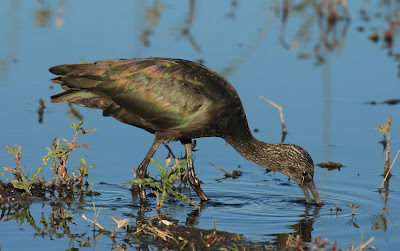.JPG) The rare yellow form of the Crimson-breasted Shrike (Photo: K Oake)
The rare yellow form of the Crimson-breasted Shrike (Photo: K Oake) If you've only ever seen an illustration of the yellow form of the Crimson-breasted Shrike in your bird book and, like many others, even doubted its existence, you'll be happy to know that it is alive and well and living at Kgantsang along the Nhabe River in Ngamiland, northern Botswana. This individual was first seen on 19th July by Andy Moore, Chris McIntyre and Tony Caulfield while out mountain-biking along the river; fortunately they realised the rarity and importance of their sighting and contacted BirdLife Botswana member Ken Oake who photographed it and told other keen birders about it. They were also able to relocate it, confirming its existence! As can be seen from the photograph, the breast of the bird is a rich yellow-orange colour, making it strikingly beautiful. Its mate has the normal crimson breast.



